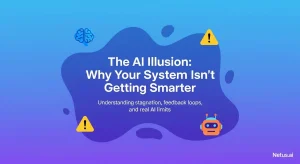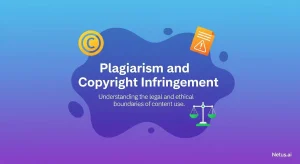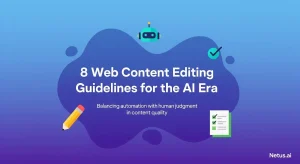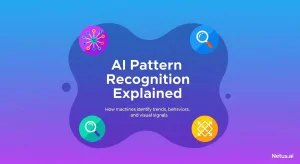How to Avoid Academic Cheating: Effective Strategies for Integrity
Ashley Merit
Content writer and editor for Netus.AI
Table of Contents
How to Avoid Academic Cheating. High school students often face various academic exercises and assignments designed to evaluate their critical thinking and creativity. These tasks demand a combination of knowledge, research, and proficient writing style to create meaningful content. Over time, academic cheating has become a significant concern, as dishonest methods become more prevalent to complete academic work. Such unethical behavior can result in severe penalties, depending on the type of academic dishonesty involved.
Being knowledgeable about institutional rules and adhering to a code of conduct is essential for students and researchers alike. Educational malpractice encompasses everything from cheating off fellow students to intentionally sabotaging others’ research work. Hence, it is crucial for students to be aware of the consequences of such actions and avoid all forms of dishonesty while working on academic tasks.
Key Takeaways
- Academic cheating undermines students’ critical thinking and creativity.
- Awareness and adherence to institutional rules are vital to prevent academic dishonesty.
- Understanding potential consequences can deter students from engaging in unethical behavior.
Factors Leading to Academic Cheating
Academic cheating is prevalent in high schools and colleges. Some factors that contribute to this increase in dishonesty include:
- Online learning: The rise in online courses has made it easier for students to cheat.
- Large classes: It’s more challenging to detect cheating in large classes.
- High school: Academic misconduct often starts in high school, leading to increased cheating in higher education.
- Stress: Overwhelming expectations and workload lead students to resort to dishonest practices.
- Peer pressure: Students may feel pressured to cheat by their peers.
- International students: Differences in academic expectations and integrity between countries can contribute to cheating.
- Academic honesty: A lack of understanding or emphasis on the importance of academic integrity can result in misconduct.
These factors, coupled with the growing prevalence of online courses and increased expectations on students, create an environment where academic cheating becomes more widespread.
Lack of Awareness Regarding Plagiarism
Plagiarism involves the improper use of information without giving appropriate credit to the source. It is critical in academic writing to cite sources, as this acknowledges the contribution of others’ ideas. Failing to do so, including overlooking citation for pre-written essays or using plagiarism checkers, can lead to unintentional plagiarism.
Students may mistakenly assume certain information is common knowledge or might not know the proper method for citing resources. Educating high school students about the nuances of plagiarism, including minor mistakes like neglecting to use quotation marks or omitting an author’s name, can help prevent these issues.
To reduce plagiarism instances, it’s essential to:
- Understand the importance of proper citation in academic writing
- Learn correct citation methods for various resources
- Use plagiarism checkers or citation generators to ensure accuracy
By increasing awareness about plagiarism and its potential consequences, students can better avoid these pitfalls in their writing.
Little Knowledge About the Writing Format:
In academic writing, it is crucial to comprehend and adhere to the required format and style. Each academic assignment has a specific format outlined by the instructor, which students must diligently follow.
Being careless or making mistakes in formatting may also be considered a form of academic dishonesty. An academic assignment is not a casual piece of writing, and following the proper format is essential to avoid any accusations of academic dishonesty.
To maintain academic integrity, students should:
- Have a thorough understanding of the format
- Pay attention to deadlines
- Carefully arrange and present their work
By doing so, students will demonstrate a good grasp of academic writing formats and ensure the proper presentation of their assignments.
Neglecting Academic Responsibilities
Ignoring academic tasks, such as test, homework, and project assignments often leads to procrastination. Many students underestimate the importance of these tasks and postpone them until the deadline approaches. Working under last-minute pressure may result in errors and a higher likelihood of copying information from online sources or peers. Developing effective time management skills, participating in study groups, and avoiding procrastination can help students achieve better grades and reduce the risks associated with academic dishonesty.
Lack of Confidence in Personal Writing Style
Some learners may struggle with expressing their thoughts and ideas in their own words, lacking faith in their ability to articulate arguments effectively. This issue can contribute to academic dishonesty if not addressed properly. Here are several steps that can help reduce the likelihood of cheating and foster a culture of integrity:
- Promote understanding of academic dishonesty: Instead of solely focusing on penalties for cheating, engage in broader discussions about the impact of plagiarism on student work. Make learners aware of the consequences dishonesty may have on their career and writing skills.
- Clarify academic writing rules: Discuss citation and formatting guidelines with students before assigning tasks. Ensure that adequate time is allocated for paper completion to discourage last-minute cheating.
- Encourage students to check their work: Encourage students to take responsibility for their submissions by manually checking their academic work for plagiarism or using an online plagiarism checker.
- Foster student writing development: Offer support and encouragement to students who lack confidence in their writing abilities. Utilize campus resources such as the Academic Success and Achievement Program (ASAP), Mathematics Academic Resource Center (MARC), The Writing Center, and University Libraries to provide guidance and opportunities to improve their writing style.
By taking these steps, institutions can cultivate a more ethical and collaborative environment where students feel confident in expressing their ideas while respecting intellectual property and honor codes.
Avoiding Plagiarism: A Crucial Responsibility
In today’s world, detecting plagiarism is an effortless task due to advanced anti-plagiarism software. As an academic writer, it’s essential to steer clear of questionable practices and thoroughly review research papers using a plagiarism detector. This ensures the identification and rectification of unintentional plagiarism or cheating, which are unacceptable in academic documentation. Ultimately, engaging in such malpractices can gravely damage the careers of both students and writers.
When producing academic content, it’s vital to remain:
- Confident: Display a strong understanding of the subject matter.
- Knowledgeable: Showcase an awareness of relevant information and concepts.
- Neutral: Present an impartial and unbiased perspective.
- Clear: Communicate ideas effectively and concisely.
Writing in the third person is also a key aspect of maintaining formality and professionalism in academic writing.
Frequently Asked Questions
How can students ensure they uphold academic integrity?
- Familiarize themselves with the institution’s academic integrity policies
- Develop proper time management and study habits
- Seek help when needed, from instructors or peers
- Properly cite sources and ensure original work is submitted
What approaches can be taken to prevent academic misconduct?
- Schools can utilize plagiarism detection software
- Teachers can offer explicit guidelines on ethical academic conduct
- Ensuring students understand the consequences of academic dishonesty
- Utilizing varied assessment methods, such as open-book exams or individualized assignments
How does collaborative work encourage academic honesty?
- Encourages peer accountability and shared responsibility for success
- Students learn from one another and develop teamwork skills
- Promotes the importance of communication and negotiation
- Distributes workload and prevents stress-induced cheating
How does a well-defined honor code deter academic dishonesty?
- Makes expectations and consequences of dishonesty clear to students
- Fosters a culture of integrity among the academic community
- Encourages students to hold one another accountable
- Reinforces trust between educators and students
What are the best practices for composing essays with academic integrity?
- Develop a clear thesis for the essay
- Engage in thorough research using reliable sources
- Properly cite all sources using the designated citation style
- Draft and revise multiple times to ensure originality and clarity
- Allow ample time for the writing process to prevent last-minute cheating
How can educators design assessments to minimize cheating opportunities?
- Employ varied assessment methods, such as essays, oral presentations, or in-class discussions
- Make exams open-book or open-note to reduce memorization-based cheating
- Randomize questions and answer options for multiple-choice exams
- Provide clear instructions and expectations to prevent unintentional plagiarism

The shortcomings of content generated by AI | NetusAI
Discover why fast, high-volume AI content often fails to deliver real results. Learn about the crucial missing feedback loop and how implementing performance tracking can transform your AI content strategy.

The illusion of AI: Your system's intelligence gap | NetusAI
Stop wasting marketing spend! Most AI tools don’t learn from results, causing content stagnation and low engagement. Discover why your generative AI isn’t getting smarter and what system actually learns and optimizes content.

Plagiarism and copyright infringement | NetusAI
Learn the distinct differences between plagiarism and copyright infringement. Understand the ethical and legal implications and get practical strategies for avoiding both academic and creative work with NetusAI.

Tips and strategies for mobile content marketing | NetusAI
Optimized for mobile-first indexing, learn 5 essential strategies to capture attention, enhance engagement and drive leads and sales with your mobile content marketing.

Web content editing guidelines for the AI era | NetusAI
Review web content editing guidelines for the AI era. Learn how to edit AI-generated content, ensure authenticity and optimize for SEO and readability.

Explaining AI pattern recognition | NetusAI
AI pattern recognition enables machines to identify trends for diverse applications, from detecting plagiarism to fraud. Discover its processes, models and real-world benefits.
